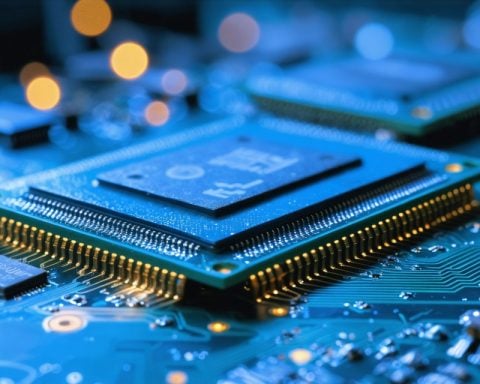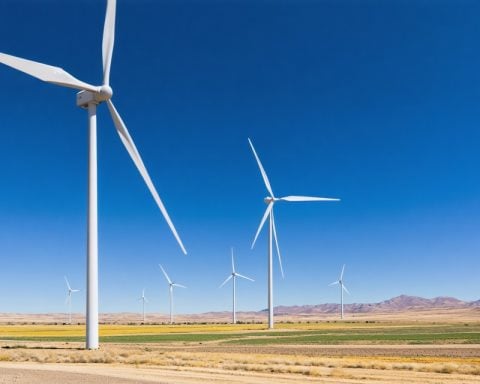- Foxconn faces challenges as China enforces strict export restrictions on technology and talent, affecting its expansion plans in India.
- China’s policies aim to prevent engineers and advanced manufacturing equipment from leaving the country, drawing parallels with Western tech transfer limits.
- Vietnam and the Middle East are less affected, while India becomes a specific target of these new restrictions.
- Proposals from the Chinese commerce ministry seek to control technologies vital to lithium and battery advancements.
- China’s strategy focuses on maintaining a central role in global supply chains amid rising tariffs and trade tensions.
- The key insight: control over technological flow is crucial in the global landscape, highlighting China’s strategic maneuvering.
Foxconn, a pivotal force in Apple’s manufacturing wheel, finds itself ensnared in a web of red tape as China tightens its grip on technology and talent flow. As Foxconn seeks to expand its iPhone production operations in India, a brewing storm of export restrictions from Beijing threatens to clip its wings.
The sprawling tech giant, known officially as Hon Hai Precision Industry Co., has seen its paths blocked by recent Chinese policies. Engineers and state-of-the-art manufacturing equipment are caught in a bureaucratic labyrinth designed to prevent their journey beyond Chinese borders. Observers note a striking parallel here with Western limits on tech transfers, once derided by China, now reimagined toward India.
However, Vietnam and the Middle East seem to evade this suffocating net, as new restrictions appear to target India specifically, analysts speculate. Meanwhile, the Chinese commerce ministry hints at proposals simmering on the horizon, aiming to corral technologies vital to lithium and battery advancements.
Beijing’s maneuvering cuts straight to the heart of a global technological chessboard, playing a game that secures China’s centrality in worldwide supply chains. As technology landscapes shift, Beijing orchestrates a calculated retention of critical capabilities, ensuring global tech dynamics remain in its favor. This strategy surfaces amid a backdrop of escalating tariffs and mounting trade tensions with the West.
The takeaway? As nations navigate their positions in this high-stakes technological tango, China’s silent strategy underscores a reality: in an interconnected world, control over the flow of ideas and innovation remains king.
The Future of Global Tech Manufacturing: How China’s Restrictions Could Reshape the Industry
Understanding the Current Landscape
In recent years, global manufacturing has experienced significant shifts due to geopolitical tensions and economic policies. Foxconn, a key player in the technology manufacturing sector, is directly affected by China’s new export restrictions. These policies not only impact Foxconn’s ambitions to broaden its iPhone production capabilities in India but also have broader implications for global supply chains.
Real-World Use Cases and Industry Trends
Growing Presence in India:
– Foxconn’s push to expand iPhone manufacturing in India is part of a broader strategy to diversify its production hubs. With escalating trade tensions and China’s stricter controls, companies are increasingly setting up operations in other South Asian nations. According to the India Cellular & Electronics Association, India’s electronics manufacturing industry is projected to reach $300 billion by 2025, underscoring the potential for growth.
Vietnam and Middle East:
– Vietnam has become a popular alternative, with its favorable trade agreements and skilled labor force. For example, Samsung has invested heavily in Vietnam, making it a major manufacturing hub for its electronics.
Pros & Cons of Expanding Outside China
Pros:
1. Reduced Geopolitical Risk: Diversifying manufacturing bases reduces dependency on a single country, mitigating risks related to political instability or policy changes.
2. Cost Efficiency: Countries like India and Vietnam offer competitive labor costs, which can lead to lower production expenses.
3. Market Access: Establishing manufacturing in different regions can improve access to local markets and reduce tariffs.
Cons:
1. Supply Chain Complexity: Managing supply chains in multiple countries can be challenging, requiring robust logistics and coordination.
2. Initial Investment Costs: Setting up new facilities involves significant expenditure for infrastructure, training, and compliance.
3. Regulatory Hurdles: Navigating the regulatory landscapes of different countries can be demanding and time-consuming.
Market Forecast and Industry Trends
The global electronics manufacturing industry is expected to continue its growth trajectory, driven by increasing consumer demand and technological innovations. Despite China’s restrictions, the industry is predicted to adapt by redistributing production capabilities to other countries. According to a McKinsey report, companies that embrace digital transformation and agile manufacturing stand to benefit the most.
Security and Sustainability
Intellectual Property (IP) Concerns:
– As manufacturing moves to new regions, companies must bolster their IP protections. This involves ensuring robust contractual arrangements and local legal compliance to safeguard technological innovations.
Sustainability Practices:
– With heightened environmental awareness, manufacturers are now prioritizing sustainable practices. This includes minimizing carbon footprints, reducing waste, and employing eco-friendly materials.
Actionable Recommendations
1. Strategic Diversification: Companies should evaluate their supply chain risks and explore potential manufacturing bases in geographically stable regions.
2. Invest in Talent Development: Training and retaining skilled labor in new manufacturing locations is crucial for maintaining quality and innovation.
3. Enhance Security Measures: Implement stringent cybersecurity protocols to protect IP and sensitive manufacturing data.
4. Sustainability Focus: Embrace green technologies and sustainable practices to meet regulatory demands and consumer expectations.
For more insights on global manufacturing and technological trends, visit McKinsey and Statista.
In conclusion, while China’s export restrictions present challenges, they also offer opportunities for growth in new markets. By strategically navigating this dynamic landscape, companies can enhance their resilience and remain competitive in the global arena.






















